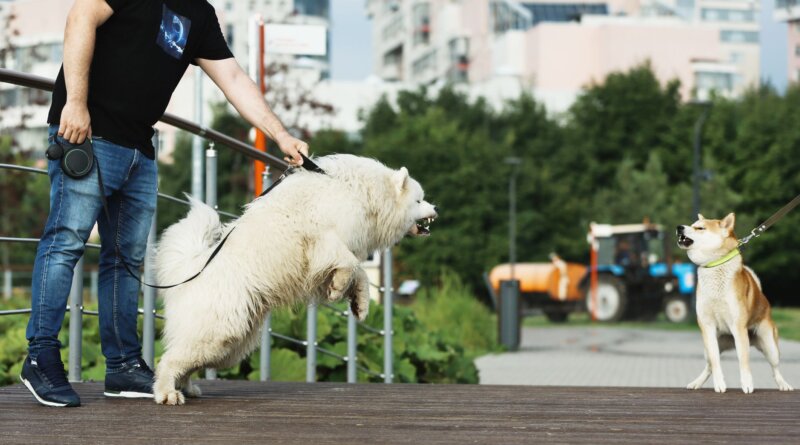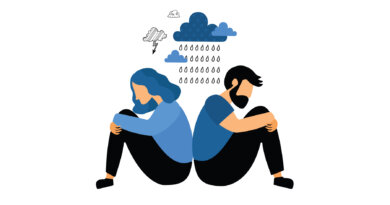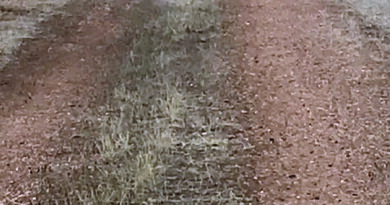How to Socialize a Dog-Reactive Dog
In the dog world, the word “socialization” is usually meant to describe the process of preparing a young puppy to be comfortable in the wider world – and that includes feeling relaxed around other dogs. But what if your dog is already an adult, and is displaying big feelings about fellow canines, barking and lunging at them? Is it possible to socialize an adult dog who is reactive to other dogs?
Technically, we can’t “socialize” an older dog – that ship sailed before he lost his baby teeth! – but we can absolutely help him feel more relaxed around his fellow canines. It can take a lot longer at this age, though, and it requires a solid plan.
Please note that this can be a nuanced, time-consuming effort. It would be a wise investment to enlist the help of a great force-free local trainer for an initial consult and for key moments along the progression.
First Goal: Keep Dog Under Threshold
The first phase of this canine makeover involves arranging your dog’s environment so that there will be no canine exposures that make him feel the need to (over)react.
It doesn’t really matter whether your dog is reactive because of over-excitement, frustration, or fear – we are going to prevent him from getting close enough to other dogs to react to them. This is what we call keeping your dog “under threshold,” and it is critical to the success of this project. Here’s why:
Every time your dog barks and lunges at a dog, he’s practicing behavior that we’re trying to extinguish. The more your dog practices a reactive response, the more deeply that neural pathway (dog sees other dog, dog barks and lunges) becomes worn into his brain; it becomes the most-traveled path through the woods. We need to change that. We need that undesired pathway to become overgrown, while we create a nice new calm alternative path.
If your regular walk is filled with other folks walking their dogs, and your dog “goes crazy” almost every time he sees or passes those other dogs, he’s practicing the behavior (and feeling the feelings) that we want to eliminate. If you want to eliminate your dog’s over-reaction to other dogs, you can’t keep gritting your teeth and putting up with the embarrassing reactivity. Those “practice sessions” of unwanted behaviors must stop!
To create that much-needed, calm new pathway in your dog’s brain, we want to set things up so that your dog only experiences other dogs at a distance where he can remain under threshold. When he’s calm, he’s able to learn from you. Here’s what you can do to get the distance from other dogs that your dog needs:
- Change the timing of your walks. Shift your walks to when few dogs are out. (There’s a reason Annie Phenix’s classic book on dog reactivity is called The Midnight Dog Walkers.)
- Change the location of your walks. If your neighborhood is dog-filled, drive to a park.
- Keep to wide open spaces. If your park has a narrow path where you might be forced into passing another dog at close range, don’t take that path.
- Be vigilant. Be constantly aware of your surroundings. Keep an eye for other dogs out on walks and be ready to cross the street, change direction, walk up a driveway, use bushes or cars to create a visual barrier between your dog and any other dogs.
- Don’t go anywhere that you might encounter off-leash dogs. Sometimes the search for wide open spaces can mean you’re risking encounters with the dreaded off-lead dogs who have no recall. Those dogs – no matter how “friendly” – destroy this training, because the main thing we’re trying to establish is that leash walks are predictably non-interactive. Do everything you can to avoid that situation.
Don’t Make Your Dog’s Reactivity Worse
- When people become aware that their dog does not appear to be friendly to other dogs, some decide they need to “socialize” their dog immediately and head to the local dog park. Ack! That scenario is the exact opposite of what the dog needs. At the dog park, you have no control over other dogs, so you can’t give your dog the distance and predictability that would build your dog’s confidence and guarantee his safety. Don’t take a dog-reactive dog to dog parks!
- Another common mistake folks make is to punish their dog when he barks or lunges at passing canines. That yelling and yanking is wholly ineffective; those owners are only making their dog’s reactivity worse. The dog already had too-big-to-manage feelings at the sight of another dog – and after that punishment, the presence of a strange dog now means their trusted person becomes scary. That’s a recipe for more reactivity, not less. Don’t punish or admonish.
- A third common mistake is to bring your own stress from past incidents to all future dog situations. If the moment you see another dog approach, your heartbeat increases, you swear under your breath, and you tighten up your leash, it will strongly influence your dog about how she should feel about other dogs. Try to relax and breathe!
Help Your Dog Form Better Associations
Now you’re ready to start building new “It’s cool, no biggie” feelings about the sight of another canine. Take your treat pouch (always!) and head to a place where you’ll see a handful of dogs at a distance you can control. A big park is a good bet. Remember that your dog needs to stay under threshold (no barking or lunging) the entire time, so err on the side of too much distance!
The goal is to teach your dog that the presence of another dog signals a predictable and positive experience: food, from you. Keep one eye on the environment and the other on your dog. When another dog (the “trigger dog”) comes into view, you produce a delicious morsel and calmly say something like, “Oh, hey, I see a dog. See the dog?”
At first, your dog may be too focused on the other dog to turn to you for a treat – although a higher-value treat may do the trick – so go ahead and put that morsel right in front of his nose. As long as the trigger dog stays in sight, keep up the calm-but-cheery patter (“Yup, that’s a dog alright!”) and the treat delivery. When the trigger dog is no longer visible, stop the flow of food.
At one time, trainers sought to keep a dog-reactive dog from looking at other dogs; we’re not doing that. Neither are we insisting that the dog take a good long look at other dogs. We’re simply noticing together that, yep, that’s a dog over there, and nothing more intense will happen with that dog. The dog learns to take a look and then turn back to you, because noticing another dog reliably predicts that you will serve him some yummy food.
This predictability is important. Dogs, like humans, feel more comfortable when they know what’s next. Anxiety (or over-arousal) about what they may be called upon to do (like greet another dog up close) can be at the root of reactivity. That’s why it’s incredibly effective when we turn these experiences into a pattern the dog can count on: We see a dog, it’s no biggie, there’s food, and we all go on our way.
As you do this more and more, you should notice your dog becoming notably less aroused by the sight of these distant dogs. Ideally, your dog will be less likely to stare intently at other dogs, quicker to turn to you for the treat he knows is coming his way, and (after a quick glance at the other dog) more likely to keep his attention with you, because he’s learned that other dogs aren’t something he needs to pay much attention to. You are successfully creating that new neural pathway: See other dog, swivel to mom for chicken!
Invest in Connection

Slowly Close the Gap
You can stay right at this level if this is the extent of the improvement you need. But if your goal is to be able to easily pass strange dogs at close range, it’s time to experiment with slowly closing the distance.
Let’s say you discovered initially that, to stay under threshold, your dog needed to be 120 yards (a football field) from a Frisbee-chasing Border Collie, maybe 20 yards from a calm Labrador, and 15 feet from a napping old Beagle. Whatever those gaps are, start to slowly shrink them. Do some treat-filled training where your dog is under threshold. Can your dog happily do easy things like sit, touch, spin or whatever you work on at home? If yes, then move five feet closer to the trigger dog. Watch your dog’s body language. Is he still under threshold? Do some more training. Take your time.
Come back the next day and the next. Is your dog easily focused on you, not needing to monitor the other dogs much? Great, move five feet closer.
The easiest mistake to make here is to either get too impatient or too confident. That will cause you to move too quickly, get too close, and ruin the feeling of predictability for your dog. I know it’s boring! I know you don’t feel like you have time for this! But going slowly will pay off.
This process may take three sessions or three months. But a dog can go from a wildly barking/lunging dog to one who can walk down a city street calmly passing other leashed dogs. Can every dog do it? No – but every dog can make progress.
Walk With a Calm Dog You Know
In addition to being able to pass dogs in the street without incident, a great goal is to find a human-dog team that can become your very predictable walking partners. This can help your dog get to know a particular dog around whom he is 100% comfortable, and that, in turn, can help your dog feel a bit calmer around all dogs.
The ideal team is a human your own dog knows and likes, and a dog who is relaxed around other dogs. To complete the perfect fantasy, these folks live nearby so this can become an everyday pattern that will quickly build confidence.
The first time you try this, start by having the other human leave her dog for a moment (with someone else, or in the car) and come over to say hello to your dog. Use the Mr. Rogers Hack (see “How to Talk to Your Dog”), to let your dog know what to expect.
For example, you can use the word “friend” to indicate someone your dog has met before, and “Say hi!” to indicate that you’re going to greet someone. So in this instance, you could say, “Oh, hey, it’s our friend Linda. Say hi to our friend!” This gives your dog a heads up that this is different from your well-established no-interaction pattern when you pass strangers on a walk. He can trust that your “Hey, I see a dog! See the dog?” will still mean that you won’t be interacting with the strange dog, but “Say hi to our friend” will indicate some level of interaction with a person. Remember, your dog needs to know what to expect to feel calm and confident.

Next, help the dogs see each other for the first time at a nice distance. Don’t blow the first moments by having dogs bounding out of the car before you have a chance to arrange the environment! Keep that distance – 100 feet or 10 feet, whatever your dog needs – and start walking in the same direction (not toward each other). Keep as far apart as you need to be for your dog to feel relaxed. Walking parallel (instead of with one in front) is best, because that way each dog can be subtly checking out the other dog and, ideally, becoming more comfortable as the walk goes on.
Do this right – building positive associations with the other dog by feeding treats, rewarding engagement with you to keep dogs from being fixated on each other, observing the dog’s body language as a guide so you can constantly adjust the distance between the dogs – and after 45 minutes you may have two very relaxed dogs trotting along on the same adventure.
Don’t Rush A Reactive Dog
You might be tempted to let them sniff each other and even play, because you really, really want that! But – unless you have that great force-free trainer there to help you assess body language – stop yourself. Everybody tries to rush this, then a bad thing happens that may be hard to recover from.
Instead, quit while you’re ahead, and make a plan to meet again in the next few days. Do everything exactly the same way, and you’ll likely find you can move through the stages much faster. Then once you have this little walking friendship going with one dog, try starting it up with another team. You will likely find the process goes much more quickly.
Now your dog is beginning to build a history of acting calm and feeling safe in close proximity to other dogs. As long as you continue to protect and guide your dog’s dog-to-dog experiences, it will become easier and easier to keep your dog under threshold.
Can My Reactive Dog Go Play With Other Dogs Now?
I encourage you to be thrilled with that! Still looking for more? The holy grail of this journey is getting to the point that you can allow free interaction, up to and including the exuberant chasing, wrestling, mouthy nirvana that is canine play.
That’s absolutely worth working toward . . . but this is where I stop acting as your tour director. Why? Because if you have an unsocialized adult dog who has never had a chance to develop dog-to-dog communication skills, there is a risk in letting him loose with other dogs. He isn’t yet experienced in understanding and giving canine messages like “I love this!” or “I need a break.”
Does that mean you should give up? Absolutely not! While there are plenty of dogs who live wonderful lives without canine play, it sure is a nice part of life. Plus, maybe you want to be able to spend holidays with your brother’s family, which includes a playful Lab, or your neighbor is willing to pet-sit for you but she has a friendly dog.
This is when it’s critical to bring in a skilled trainer to direct the effort. An experienced professional will be able to create the right setup, find the right dog partners, read the complex and subtle canine body language, and intervene and/or redirect appropriately. After some of that help, you may find yourself happily watching your dog frolic with a friend for the first time.



